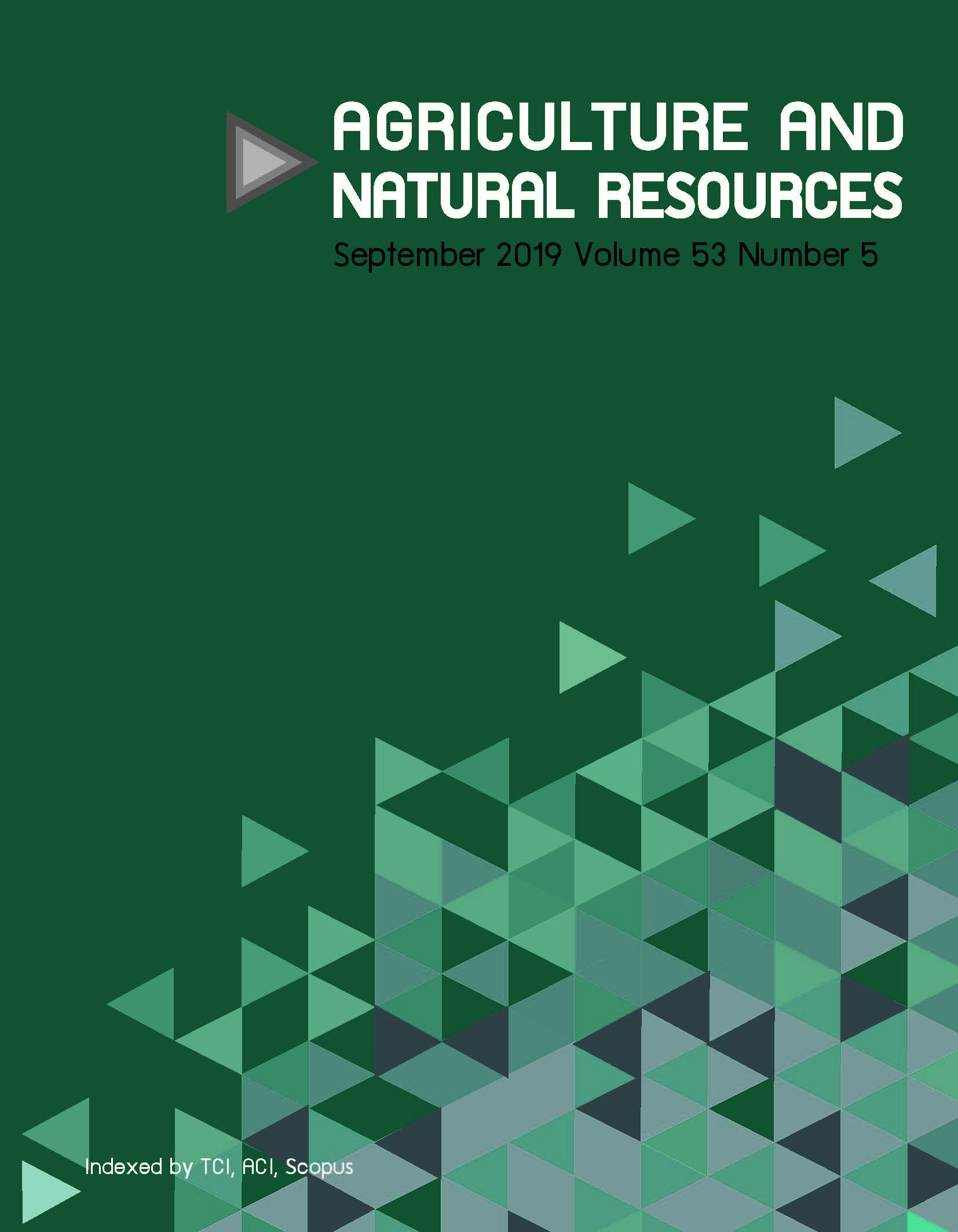Utilization of fruit by frugivores in lower montane forest at Doi Suthep-Pui National Park, Chiang Mai province
Keywords:
Diversity, Frugivores, Long-term ecological research, Lower montane forest, Seed disperserAbstract
Utilization of fruit by frugivores is important for the natural recovery of forests. This study clarified the regeneration status and fruit utilization by frugivores in a 16 ha lower montane forest permanent plot in the Mae Sa-Kog Ma Biosphere Reserve. Fruit utilization was monitored using camera traps from May 2015 to April 2017. Of the 74 fruit bearing species (402 individuals/ha) 28 species were surveyed but only 8 of these provided fruit and of these, camera trapping detected frugivore activity on six species. The highest density species was Castanopsis acuminatissima (139 individuals/ha), followed by C. armata (33 individuals/ha) and Helicia nilagirica (23 individuals/ha), respectively. The diameter class distribution of fruit trees was described using a negative exponential form. Fourteen frugivore species utilizing the six fruiting species based on detection in 709 video clips. The most frequently utilized plant by frugivore species was Mudhuca floribunda, followed by Musa acuminata, Ficus hirta, F. semicordata, C. acuminatissima and Schefflera sp., respectively. In addition, Musa acuminata, F. hirta and F. semicordata provided fruits throughout the year and played an important role as frugivore food resources which strongly influenced the abundance and distribution which are known more generally as keystone species. In contrast, the fruits of C. acuminatissima and Schefflera sp. were eaten only by rodents and birds, respectively, indicating that fruit utilization varied among the fruiting species. This knowledge can inform structural restoration programs in which fruiting species can attract frugivores to increase the success of plant restoration.
Downloads
Published
How to Cite
Issue
Section
License
Copyright (c) 2019 Agriculture and Natural Resources

This work is licensed under a Creative Commons Attribution-NonCommercial-NoDerivatives 4.0 International License.
online 2452-316X print 2468-1458/Copyright © 2022. This is an open access article under the CC BY-NC-ND license (http://creativecommons.org/licenses/by-nc-nd/4.0/),
production and hosting by Kasetsart University of Research and Development Institute on behalf of Kasetsart University.







